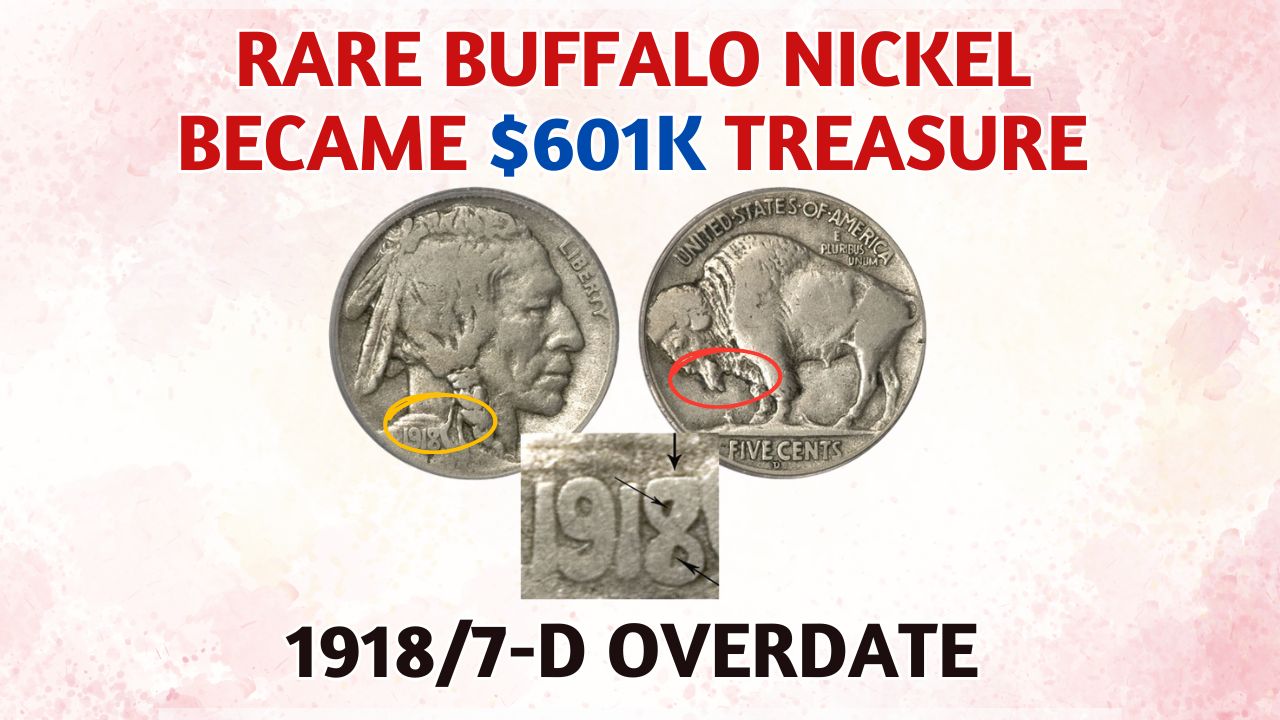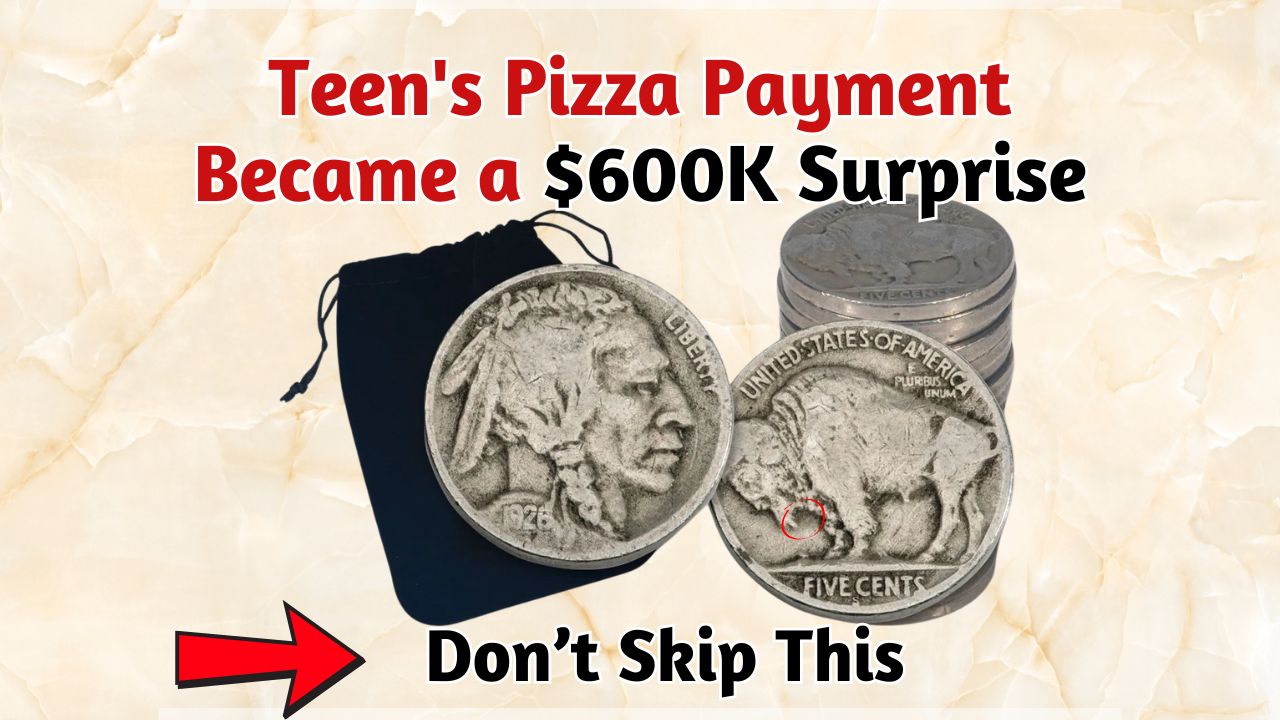In the sprawling tapestry of American numismatics, stories often weave themselves around silver dollars, ancient coinage, or limited-edition mints. But every so often, a tale surfaces that defies expectations and rewrites what we think we know about value.
One such story unfolded with an unassuming Buffalo Nickel—a modest coin that once paid for a greasy pizza slice and eventually claimed its throne in a world-class museum with a price tag that could buy a small house. This wasn’t just about metal and minting. It was about fate, curiosity, and the serendipity that often escapes our daily grasp.
Forgotten Coin
The year was 2007, and somewhere in suburban Pennsylvania, a hungry teenager found himself reaching into a pocketful of loose change to settle a late-night pizza tab. Like many quick transactions, it was thoughtless, fleeting. Quarters, dimes, and nickels clinked into the delivery driver’s palm, none of which seemed remotely significant.
But tucked among them was a rugged Buffalo Nickel—scratched, timeworn, and anonymous. The driver, understandably, didn’t inspect the coin. He dropped it into his change pouch and moved on, unaware that he had just accepted a piece of American history alongside a pepperoni order.
Coins pass through hands every day, often unnoticed. Their stories, if any, go untold. But this one was different. This coin had a whisper of something ancient within its rim, and it wouldn’t remain anonymous for long.
Ordinary Coin Shop
Two weeks later, the coin found its way into the till of a small, independent coin shop. The owner, a seasoned collector with decades of experience, had a practiced habit of examining every coin that came through his register. As he sifted through the day’s earnings, one nickel drew his attention—not because of its shine, but because of its unusual features.
The date was nearly invisible, worn to a ghost of its original etching. But the orientation of the buffalo was off. There was a doubling in the design, a peculiar overprint that seemed to dance in the shadows of the reverse.
Recognizing the markings, the shopkeeper retrieved his magnifying lens. His pulse quickened. This wasn’t a regular Buffalo Nickel. It was a 1918/7-D overdate—a rare minting error where the numeral 8 had been struck over a 7 on the die, creating a distinct and collectible misprint. Less than 200 of these rare overdates were known to exist in decent condition. This coin, despite its wear, had just stepped into the rarest echelons of coin collecting.
Became a Legend
The 1918/7-D overdate is a well-documented numismatic marvel. Errors like these occur when minting dies are reused or repurposed, and remnants of the previous date still remain visible. In this case, the Denver Mint accidentally used a 1917 die, stamping 1918 over it. The result? A date that shows both 7 and 8—a subtle but glaring mistake that became a collector’s dream.
Most error coins are caught before mass circulation, but a few slip through, becoming artifacts of accidental artistry. These anomalies tell tales not just of minting mistakes, but of the era itself—of the machinery used, the pressures of wartime mint production, and the human hands that oversaw the presses.
The Auction That Redefined Value
After passing quietly between a few private collectors over the years, the nickel finally made its public debut in 2024 at a Stack’s Bowers Galleries auction. The auction room buzzed with anticipation. Even though the coin had seen better days and bore the visible scars of decades in circulation, its mystique was undeniable. Bidding began modestly, but as minutes ticked by, hands rose higher, and the numbers climbed steadily.
Collectors didn’t just see metal. They saw narrative. They saw the journey of an overlooked coin that had once bought a pizza. That story added layers of charm, sentiment, and a sense of fortune to the object. When the final bid landed, the room fell into stunned silence. The final price? A staggering $601,000.
What made it truly astonishing was not just the overdate or its condition, but its past—a coin that had lived a common life before becoming uncommonly valuable.
Glass Fortress
The buyer, wishing to remain unnamed, soon made a philanthropic gesture. Rather than locking the coin away in a private vault, he chose to loan it to the American Numismatic Museum in Colorado Springs. There, under carefully controlled temperatures and behind fortified glass, the legendary nickel now sits, illuminated by soft lighting and flanked by a plaque that tells its story.
Visitors flock to the exhibit not just for the coin’s rarity, but for the sheer marvel of its journey. It’s not often that a nickel that once lay forgotten in a teenager’s jean pocket becomes a museum-worthy artifact. Children press their noses against the glass. Adults stare in disbelief. The story captures them all.
Why Buffalo Nickels Still Speak to Us
The Buffalo Nickel, minted between 1913 and 1938, stands as one of America’s most iconic coins. Its imagery—a stoic Native American on the obverse and a burly American bison on the reverse—evokes the untamed spirit of the early 20th century. It’s a coin steeped in symbolism: grit, survival, heritage.
But among these coins, some possess more than just historical beauty. Some carry anomalies—accidents that became masterpieces. The 1918/7-D overdate is one of them. Its rarity and its charming, almost mythical story, elevate it beyond monetary worth. It becomes a tale of overlooked potential, of hidden greatness.
Treasure in Your Pocket
This story sparks an irresistible thought: if a teenager unknowingly used a six-figure coin to buy a pizza, what might you be carrying right now? It’s a whimsical but real reminder that coins aren’t just currency. They’re time capsules. Artifacts. Sometimes, even golden tickets.
You could have a similar rarity hiding at the bottom of a change jar, tucked in a forgotten drawer, or rolling under the seat of your car. While not everyone will strike it rich, the joy is in the discovery. And sometimes, history hides where we least expect it.
Final Reflection
The journey of this Buffalo Nickel—from a late-night pizza run to a museum pedestal—teaches us something profound. Greatness doesn’t always shimmer. Wealth doesn’t always announce itself. And history, more often than not, walks quietly beside us.
This nickel didn’t start out famous. It was passed around, mishandled, ignored. And yet, through sheer chance and a collector’s eye, it revealed itself to be one of the most extraordinary stories in the realm of rare coins.
Next time you’re handed change at a diner or sort through your old piggy bank, give the coins a second glance. Somewhere in the clatter of nickels and dimes, the next legend may be waiting.
FAQs
What is a 1918/7-D Buffalo Nickel?
It is a rare error coin where the 1918 date was stamped over a 1917 die, creating a visible overdate. Only a few hundred are known to exist.
How much did the pizza Buffalo Nickel sell for?
The coin was sold at auction in 2024 for an astonishing $601,000, despite being in visibly circulated condition.
Why is this Buffalo Nickel so valuable?
Its value comes from a mix of rarity, historical significance, and its compelling story—from being used to buy pizza to becoming a museum piece.
Where is the coin now?
The rare Buffalo Nickel is currently on display at the American Numismatic Museum in Colorado Springs.
Can I find rare coins in my pocket change?
Yes, it’s possible! Many valuable coins have been found in everyday circulation. Always check your change carefully.












